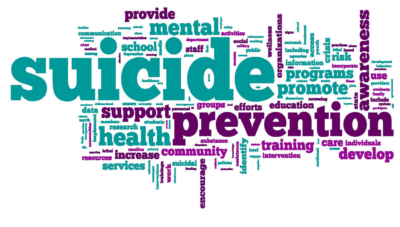Editor’s Note: This is the second in a five-part series examining youth suicide in North Carolina. Scenes in this series may be disturbing to some readers. If you need help, call the National Suicide Prevention Lifeline at 1-800-273-8255.
April Quick knew her oldest child, Ash Haffner, was struggling with mental health issues, gender identity, and bullying at school — but she didn’t expect Ash to die by suicide on a snowy February night last year.
“I don’t—” she pauses to gather her words, “just really, truly, don’t know what was building up.”
Quick, a single mom, had tried to get Ash into treatment programs. They saw doctors. They asked for help. Sometimes, everything would seem fine. “Ash would have the biggest smile and everything seemed great,” Quick says. “And you wouldn’t realize how much Ash was hurting and struggling inside.”
Now, she says, it’s easy to see the warning signs she missed.
But experts say parents aren’t the only ones who need to be watching out for at-risk children and teenagers.
“Parents, obviously, have a critical role in supporting the health and well-being of their kids but it’s also important that parents and families live inside communities and communities have a very important role in supporting parents and families,” says Michelle Hughes, who co-chairs a state task force committee that studies youth suicide.
“We often feel like we should be doing it all alone and if we need to ask for help, then we’re not doing a good job. It’s actually the opposite. If you’re asking for help, you’re doing a terrific job as a parent.”
Here’s what you need to know about youth suicide:
Watch for these warning signs
Talking about or making plans for suicide
Expressing hopelessness about the future
Displaying severe/overwhelming emotional pain or distress
Showing worrisome behavioral cues or marked changes in behavior, particularly in the presence of the warning signs above
Withdrawal from or changing in social connections/situations
Changes in sleep (increased or decreased)
Anger or hostility that seems out of character or out of context
Recent increased agitation or irritability1
How you can help
Be direct. Talk openly and matter-of-factly about suicide.
Be willing to listen. Allow expressions of feelings. Accept the feelings.
Be non-judgmental. Don’t debate whether suicide is right or wrong, or whether feelings are good or bad. Don’t lecture on the value of life.
Get involved. Become available. Show interest and support.
Don’t dare him or her to do it.
Don’t act shocked. This will put distance between you.
Don’t be sworn to secrecy. Seek support.
Offer hope that alternatives are available but do not offer glib reassurance.
Take action. Remove means, such as guns or stockpiled pills.
Get help from persons or agencies specializing in crisis intervention and suicide prevention.2
Coming tomorrow: Why we shouldn’t be afraid to talk about suicide.



